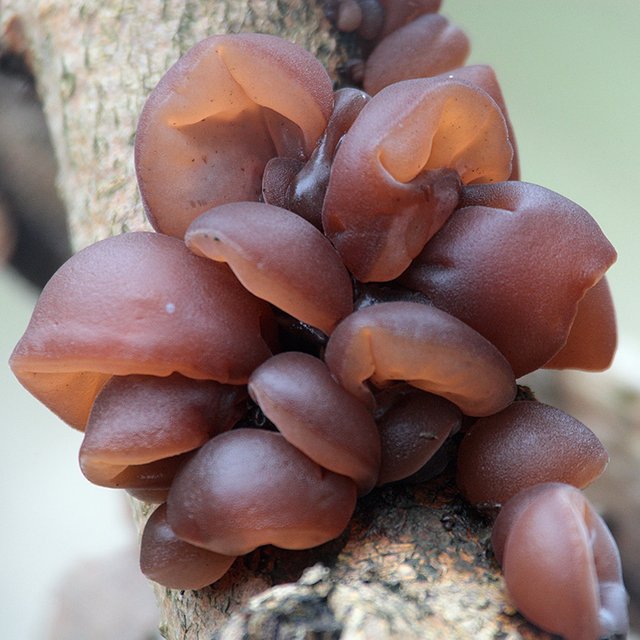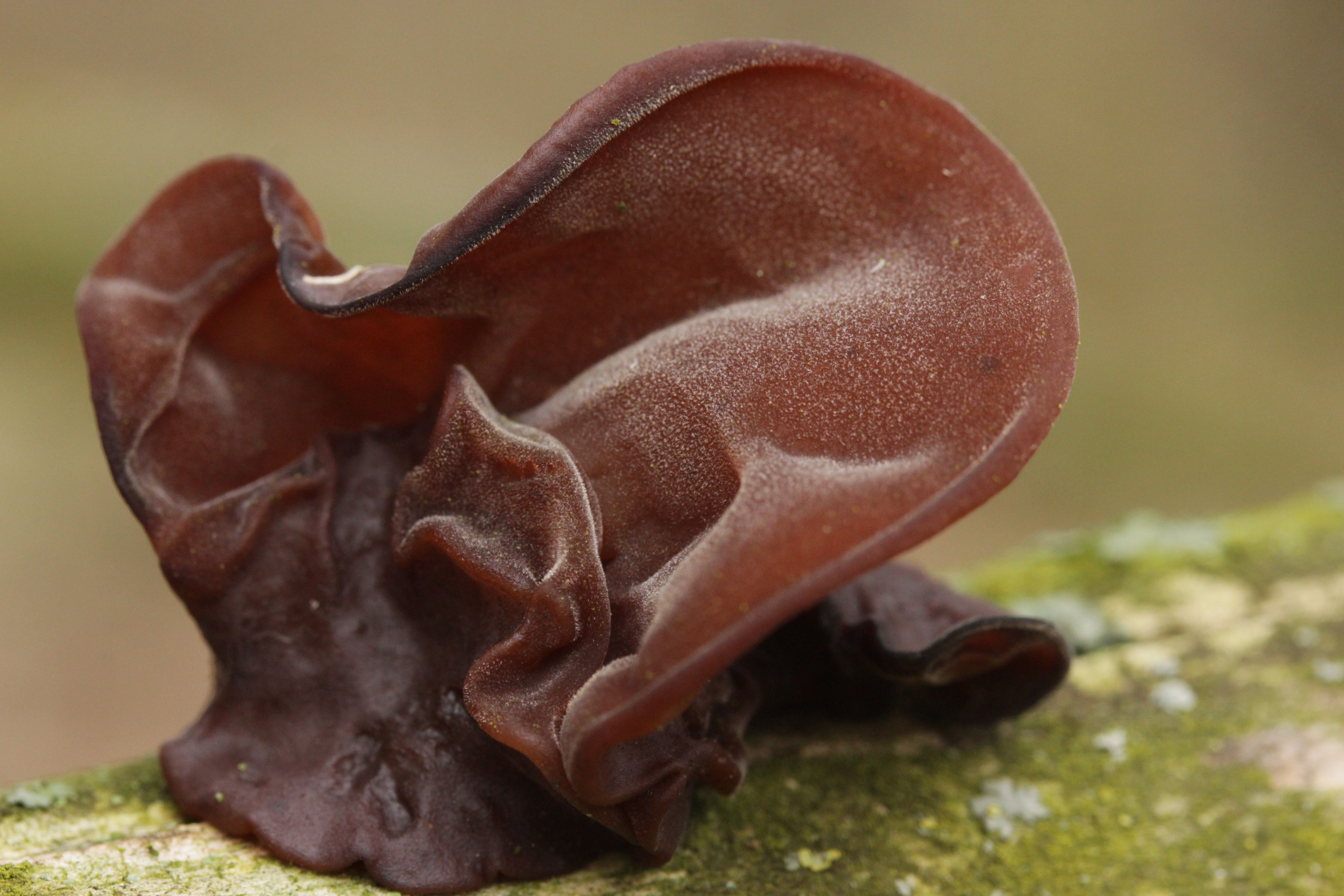
這是我的第三個翻譯實驗。我的下一篇文章將會解釋我如何翻譯內容。但是,重要的是我首先知道我的方法是有效的。我的第一篇翻譯文章受到好評。 ](https://steemit.com/cn/@dber/the-potential-treatment-of-peanut-allergies-also-let-me-introduce-myself). 起初,我的第二篇文章有很多錯誤。. 幸運的是,@htliao指出了這個明顯的錯誤,我相信它已經解決了。本文不應該有重大錯誤。
但請告訴我是否有大的錯誤。發表評論或發給我一封私人訊息。我在“discord”或“steemit.chat”,用戶名“dber”
This is the third and final experiment in translation before I post my summary on this process. @Htliao found a substantial, obvious mistake in my second article, for instance. I believe I was able to fix that problem and it should not be the case here. In order to get a clear idea of how well my translation process works, please continue to find any mistakes or inaccuracies. Either leave a comment or PM me on discord or steemit.chat. Username is dber.
本文以前已發布。現在已經被翻譯成中文。這是來自我的系列“The Amateur Mycologist”或“業餘蘑菇科學家”。這種蘑菇物種應該是許多讀者熟悉的。原來的英文翻譯是第二。
This is a repost from my series "The Amateur Mycologist." It deals with a mushroom that should be familiar to many readers. The original English translation is second.
不要用這些帖子來決定是否吃野生蘑菇。 本文旨在提供娛樂和智力的滿足。 這不是一個全面的指導。 如果你想吃野生蘑菇,連接到一個真菌社會或一個真菌俱樂部。 較大的組織也可能是資源。 如亞洲真菌協會或中國真菌學會。 吃野生蘑菇可能是危險的,危及生命。 不要這樣做,除非你有專業的幫助。
我不會討論蘑菇是否安全食用或危險。

年代:宋 作者: 楊萬里
《蕈子》
空山一雨山溜急,漂流桂子鬆花汁。
土膏松暖都滲入,蒸出蕈花團戢戢。
戴穿落葉忽起立,撥開落葉百數十。
蠟面黃紫光欲濕,酥莖嬌脆手輕拾。
蘑菇已經激發了人們幾個世紀。
這篇文章的英文版包括艾米莉·迪金森詩的摘錄。對於中文翻譯,我已經從楊萬利的一首詩中摘錄過。無論你身在何處,你都可以在你的歷史和文化中找到蘑菇。
這篇文章中的蘑菇有一個名為Auricularia auricula的科學名稱。 他們也有一個暱稱。 在中國,它常被稱為“木耳”蘑菇。 它們類似於另一種稱為“雲耳朵”的蘑菇。 然而,“木耳”和“雲耳朵”是兩種不同的物種。
他們的暱稱“木耳”的原因是顯而易見的。 這些蘑菇看起來像從木頭生長的小耳朵。 但他們並不總是看起來像耳朵。 有時候,他們在日誌上橫向生長。 然後他們看起來不像耳朵,更像是蹄子。

“木耳”蘑菇看起來與許多其他種類的蘑菇非常不同。
首先,“木耳”蘑菇沒有莖。 相反,它們直接從死木生長。

有時,“木耳”蘑菇會單獨生長。
在其他時候,它會在一個群體中成長。 無論如何,他們只能在死木或腐爛的木頭上生長。
這個蘑菇的英文暱稱是“果凍耳朵”。 這是因為“木耳”蘑菇肉感覺像一個果凍。 它具有柔軟的質感,像軟橡膠一樣。 但如果你把它擠在你的手指之間,它會保持其形狀。
看下面的圖片。

看看蘑菇的頂部。
這種物種可以有幾種不同的顏色。 在這種情況下,它是淺棕色。 靠近人體皮膚的顏色。
在這種情況下,它也有許多微小的毛髮。 更像一條柔軟的皮毛。 這種毛皮感覺很好觸摸。
但是將上面的照片與下一張照片進行比較。

這些蘑菇也是“木耳”。但他們看起來很不一樣。
這些蘑菇的頂部更暗。 他們沒有相同的毛皮。
“木耳”可能看起來與其他蘑菇不同,但它們的工作方式相同。
“木耳”蘑菇使用有性繁殖。蘑菇的底部釋放孢子。這些孢子可以類似於微觀種子。孢子離開蘑菇,漂浮在空氣中。 最終他們會降落。 如果他們在正確的地方,他們將成長為新的蘑菇。 他們甚至可能與附近的其他物種交換DNA。
蘑菇真的想要繁殖。 所以即使蘑菇變得非常乾燥,它仍然會釋放孢子。 數百萬孢子。
這也解釋了“木耳”蘑菇。世界各地的同一物種如何生長? 孢子行進距離很遠。蘑菇跟隨。

另一個奇怪的事情
新的DNA科學使蘑菇鑑定更加混亂。 許多蘑菇看起來很相似。 然而,他們的DNA通常是非常不同的。
在過去,蘑菇專家會看到兩個蘑菇。 如果兩個蘑菇看起來一樣,那麼它們被認為是同一個物種。 但現在你可以看看DNA。 因此,已經確定了許多新物種。 此外,許多類似的蘑菇已被證明是彼此不同的。
奇怪的是,“木耳”蘑菇沒有受到新的DNA信息的影響。近年來,“A.auricula”一詞沒有改變。至少這就是我在研究中看到的。當然,我可能是錯的。一如既往。:)
宏觀特徵
- 頂部/肉體 =尺寸範圍在2-15cm之間。 平均3-8厘米,通常看起來像一個耳朵。 但不總是。 有時形狀像杯子或蹄子。 頂部可以有幾種顏色。 從淺棕色或棕褐色到深棕色。有時頂部可以是毛茸茸的。身體是橡皮的。 比果凍硬,但足夠柔軟擠壓。
- 底部/孢子表面 = 沒有可見的毛孔。 這與其他稱為“多孔”蘑菇或“Polypores”的蘑菇不同。底部通常比頂部顏色淺。有類似的橡膠質感。
- 莖(“stipe”) = 一般這個蘑菇沒有莖。有時,肉體看起來像一根短莖。但從技術上講,這是不一樣的。
- 孢子的集合的顏色(“孢子印刷” or “spore print”)= 記住蘑菇釋放孢子。 你可以在一個地方收集那些孢子。 將蘑菇放在任何一塊透明玻璃上2-6小時。 然後當您取出蘑菇時,您會看到一個孢子打印或“spore print”。 知道收集的孢子的顏色是有幫助的。 對於這種蘑菇,孢子印花應該是白色的。
- 生態 (“蘑菇如何生長”) = 這種蘑菇只生長在死亡或腐爛的木頭上。 一些類型的蘑菇只能在死或爛的木材上生長。 這些蘑菇被稱為 "Saprobic"。
- 分配 = 世界各地的。 從春天開始,有時甚至是冬天。
- 雜項特徵 = 還沒有新的DNA信息。 但是將來可能會有。 當發生這種情況時,物種可能會分裂。
你不應該吃野生蘑菇。 許多是非常有毒甚至致命的! 不要依靠這篇文章來辨認野生蘑菇的晚餐! 這將是非常非常危險的。 如果你想吃野生蘑菇,從專業學習。 本文僅供您娛樂和智力刺激!
These posts are not for foraging. They are intended for entertainment and intellectual satisfaction only. These posts are not a field guide nor comprehensive in any way - their accuracy is not assured in any way. Do not eat wild mushrooms unless you are a professional, have substantial professional assistance or have a wealth of personal experience with a specific species. Do not make any foraging decisions based on these posts. To do so could be dangerous or life threatening.
These Posts Contains No Information Regarding Edibility Or Toxicity

Had Nature any supple Face
Or could she one contemn —
Had Nature an Apostate —
That Mushroom — it is Him!
Emily Dickenson was inspired to poetry by the bizarreness that it A.auricula, or the Jelly Ear.
The Jelly Ear is a strange little mushroom. First and foremost, it really does look like an ear, right? I mean, a bizarre ear growing out of a dead elder tree or other hardwood, but an ear nonetheless.
Actually, not every A.auricula specimen looks so convincingly ear-like, especially if the mushrooms are growing in a shelf-like format, where their spore surface aims downward at the ground rather than sprouting upwards from a fallen log.

Although the nickname "Jelly Ear" appears to be totally appropriate, it is a relatively new rebranding. For many years, unfortunately, A.auricula was also known as the "Jew's Ear." There are conflicting stories about why this was the case.
One narrative is that the name stems from the relationship of the mushroom to the Elder tree, which was the same kind of tree from which the biblical Judas allegedly hung himself after betraying Jesus Christ. This theory gains some support by the alternative scientific name for the species, also accepted by some, A.auricula-judae. Under this interpretation, the nickname "Jew's Ear" is less an antisemitic reference and more a reference to Judas the individual.
Michael Kuo implies that he disagrees with this interpretation, as do I. Personally, I think it's just a backward, antisemitic nickname that survived through the ages, as such things are wont to do. Therefore, I don't use either the nickname, nor the "judae" addendum on the scientific name.

Jelly Ears look very different from many other mushrooms. They do not have stems, exactly, just a piece of flesh attached to the wood. They grow exclusive on decaying wood - perhaps with a specific love for Elder trees.
They usually grow in groups, either all coming from the same attachment point or each attached separately. The "Jelly" trait is no joke - the mushrooms look and feel like jelly! They have a gelatinous and rubbery texture, especially when young and not too dry or deteriorated.

The top of A.auricula can have a bunch of different traits.
In this picture, it's a light brown, almost flesh-toned, with wrinkled flesh covered in a very fine down that would be soft to the touch, like tiny fur.
But compare that to the picture below:

These are also A.auricula specimens. But they look quite different.
The color is much darker and the skin less downy, covered in much smaller, less prominent dots.
Although they look somewhat strange, Jelly Ears are in the same Division of the Fungi Kingdom, Basidiomycota, as most of the species we've talked about. They reproduce sexually through the dispersal of spores from a spore surface.
Take a look at the pictures above showing the underside of the Jelly Ears. That is the spore surface. And like the spore surface of any mushroom, it is releasing spores almost constantly from maturity until death. In fact, since dehydration is the norm for mushrooms, the spore surface is capable of dispersing spores even at near complete water loss, after the mushroom is totally desiccated.

One last weird thing
You'll remember that many of the other mushrooms we've highlighted were thrown into a state of taxonomic confusion by the advent of DNA analysis. From what I can tell, the Jelly Ear has suffered no such fate. However, I find this genetic homogeneity unlikely given the ubiquity of the mushroom globally and the genetic diversity found throughout the Kingdom. Could be wrong, but I think either I missed something or widespread DNA analysis has not yet been done.
Whatever the case may be, keep your eyes peeled for these oddballs growing in many of the worlds deciduous and coniferous forests, in almost all seasons.
Macroscopic Features
- Cap/Flesh = ranging in size between 2-15 cm, with an average of around 3 to 8 cm across. The "ear" analogy works much of the time, but not always. Sometimes cup shaped, either facing down or upwards. Color of the cap ranges from light brown/tan to dark brown. The actual flesh is gelatinous, but not like a jello mold, more like a jelly bear. The top of the cap can be anywhere from downright downy to slightly furry.
Spore surface = Pores are not visible to the naked eye, like normal polypores. The pore surface is, usually, lighter than the cap, with a similarly gelatinous texture and similar color range.
Stem ("stipe") = Generally no stem, in a conventional sense. Usually just attached directly to a piece of decaying hardwood, and growing from that attachment. Sometimes that attachment may become a bit long, and so then it can look like a stem.
- Spore Print = White and collectible as with most normal members of Basidiomycota division.
Ecology ("How it grows.") = Saprobic - grows exclusively on decaying hard wood trees, with a possible affection for Elder trees in particular.
Distribution = All over the world, from spring through winter sometimes.
Other Traits = I didn't see any confounding taxonomic DNA information available, but some certainly may exist.
THIS POST IS NOT INTENDED FOR FORAGING PURPOSES AND TO USE IT FOR THOSE PURPOSES WOULD BE DANGEROUS. DO NOT HUNT WILD MUSHROOMS WITHOUT RELYING ON A COMBINATION OF PROFESSIONAL FIELD GUIDES, IN PERSON PROFESSIONAL GUIDANCE, OR IN PERSON GUIDANCE BY SOMEONE TRUSTWORTHY WHO HAS COPIOUS LOCAL, SPECIALIZED MUSHROOM HUNTING EXPERIENCE. FAILURE TO DO SO CAN RESULT IN GRIEVOUS PERSONAL HARM OR DEATH.
Support the SteemSTEM project - curating and encouraging quality STEM related content across the STEEMIT platform
請支持“SteemSTEM”項目! SteemSTEM有助於在STEEMIT上創建和支持STEM內容。
Information Sources/信息來源:
The Mushroom is the Elf of Plants, Emily Dickenson
http://www.mushroomexpert.com/auricularia_auricula.html
https://en.wikipedia.org/wiki/Auricularia_auricula-judae
http://botit.botany.wisc.edu/toms_fungi/apr2004.html
Photo Sources/圖片來源:
[1][By Björn S... (Auricularia auricula) CC BY-SA 2.0, via Wikimedia Commons
[2]Stu's Images CC BY-SA 3.0, via Wikimedia Commons
[3]By Björn Sothmann (Own work) CC BY-SA 4.0, via Wikimedia Commons
[5]Stu's Images CC BY-SA 3.0, via Wikimedia Commons
[6]By Jerzy Strzelecki (Own work) CC BY-SA 3.0 via Wikimedia Commons
Very nice job, thank you for sharing @dber
Downvoting a post can decrease pending rewards and make it less visible. Common reasons:
Submit
Thanks for the resteem!
Downvoting a post can decrease pending rewards and make it less visible. Common reasons:
Submit
Hi! I am a robot. I just upvoted you! Readers might be interested in similar content by the same author:
https://steemit.com/steemstem/@dber/the-amateur-mycologist-17-auricularia-auricula-the-jelly-ear-2017817t14117394z
Downvoting a post can decrease pending rewards and make it less visible. Common reasons:
Submit
I disclose this in the body of this post @cheetah. This post has been substantially altered over several hours of work and translated into Chinese.
Downvoting a post can decrease pending rewards and make it less visible. Common reasons:
Submit
This post received a 3.8% upvote from @randowhale thanks to @dber! For more information, click here!
Downvoting a post can decrease pending rewards and make it less visible. Common reasons:
Submit
@dber got you a $1.69 @minnowbooster upgoat, nice! (Image: pixabay.com)
Want a boost? Click here to read more!
Downvoting a post can decrease pending rewards and make it less visible. Common reasons:
Submit
看上去又像木耳,又像蘑菇
Downvoting a post can decrease pending rewards and make it less visible. Common reasons:
Submit
这是一个蘑菇。有点不同于正常的蘑菇。
Downvoting a post can decrease pending rewards and make it less visible. Common reasons:
Submit
不知道味道怎么样哈哈
Downvoting a post can decrease pending rewards and make it less visible. Common reasons:
Submit
你应该可以在商店买这种蘑菇。但不要吃任何您在大自然中发现的蘑菇! :)
Downvoting a post can decrease pending rewards and make it less visible. Common reasons:
Submit
好的哈
Downvoting a post can decrease pending rewards and make it less visible. Common reasons:
Submit
I'm impressed!
Downvoting a post can decrease pending rewards and make it less visible. Common reasons:
Submit